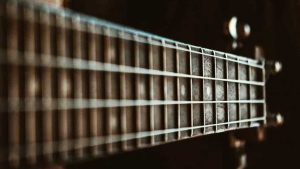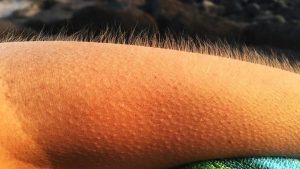Folkstrings.com is reader-supported. When you buy through links on our site, we may earn a small commission.
Baroque music is a style of Western classical music composed between approximately 1600 and 1750.
During this time, a variety of stringed instruments were developed and used in ensembles and orchestras, including the violin, viola, cello, and bass.
These instruments were often made with gut strings and played with bows made on the Baroque model.
The Baroque period was characterized by elaborate ornamentation, complex polyphonic textures, and a focus on conveying emotion through music.
Stringed instruments played a significant role in this style of music, with the violin often taking a leading role in ensembles and concertos.
Other instruments commonly used in Baroque music include harpsichord, organ, lute, and various wind instruments.
Key Takeaways
- Baroque music is a style of Western classical music composed between approximately 1600 and 1750.
- Stringed instruments such as the violin, viola, cello, and bass were commonly used in Baroque ensembles and orchestras.
- The Baroque period was characterized by elaborate ornamentation, complex polyphonic textures, and a focus on conveying emotion through music.
Looking at the Baroque Period…
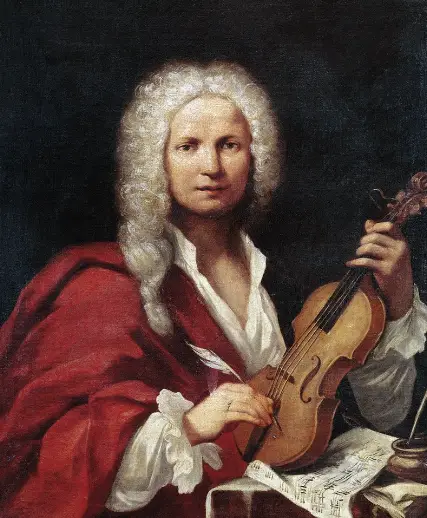
The Baroque period, which lasted from approximately 1600 to 1750, was a time of great artistic and cultural significance. It was a time of grandeur, extravagance, and dramatic expression. The Baroque period followed the Renaissance period and preceded the French Revolution, and it was marked by a number of important cultural and artistic movements.
During the Baroque period, there was a great deal of experimentation with different musical instruments, particularly stringed instruments. The orchestra of the Baroque period typically consisted of string instruments, such as the violin and viola, as well as the continuo, which provided a continuous bass line.
One of the most significant developments in stringed instruments during the Baroque period was the introduction of the Baroque violin. This instrument had a shorter fingerboard and a less steep angle than the modern violin, and it was typically played with gut strings rather than metal strings.
Another important development during the Baroque period was the use of the harpsichord as a continuo instrument. The harpsichord was a keyboard instrument that produced sound by plucking strings with a quill. It was often used to provide a rhythmic accompaniment to other instruments.
The Baroque period was also marked by a number of important composers, including Johann Sebastian Bach and George Frideric Handel. These composers were known for their complex and intricate compositions, which often featured elaborate ornamentation and complex counterpoint.
Overall, the Baroque period was a time of great innovation and experimentation in the world of music. It was a time when new instruments were developed and new musical styles were explored, and it laid the groundwork for many of the musical developments that would follow in the centuries to come.
Baroque Stringed Instruments
During the Baroque period, stringed instruments were an essential component of the orchestra. The typical Baroque orchestra consisted of string instruments, such as the violin, viola, violoncello, and violone, and a continuo, which provided the harmonic foundation.
Let’s explore some of the most popular stringed instruments of the Baroque era.
Violin Family
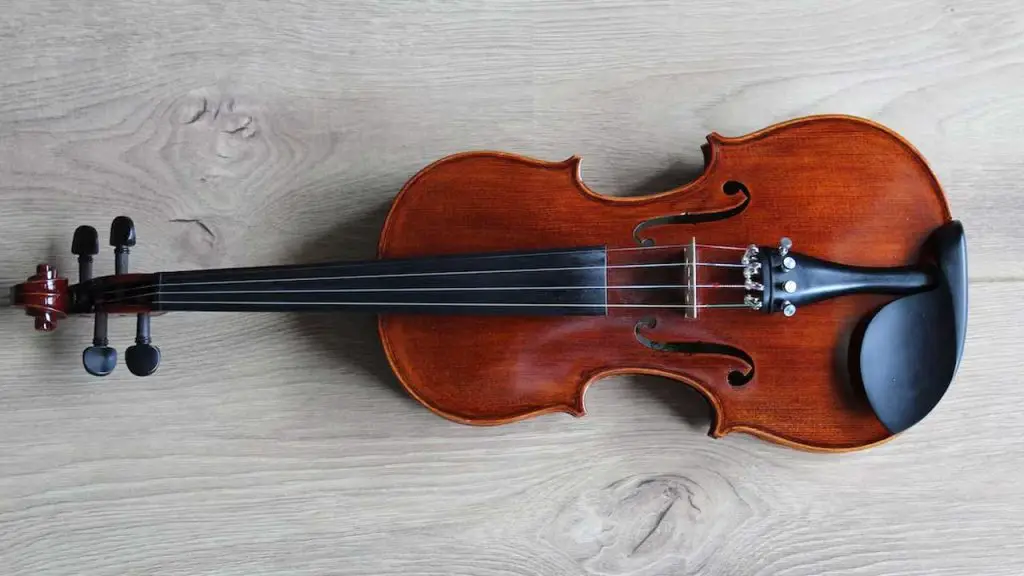
The violin family, which includes the violin, viola, and violoncello, was the most commonly used stringed instrument in the Baroque orchestra. The violin was the lead instrument, and it was used to play the melody and virtuosic passages. The viola was used to play the inner harmonies, while the violoncello provided the bassline.
Viola da Gamba
The viola da gamba, also known as the viol, was a popular stringed instrument during the Baroque era. It had a flat back and six strings, and it was played upright, like a cello. The viola da gamba was used to play both solo and ensemble music and had a warm, mellow sound.
Violone
The violone was a large, deep-bodied stringed instrument that was similar to the double bass. It had six strings and was played with a bow or plucked with the fingers. The violone was used to play the bassline in the Baroque orchestra.
Other Stringed Instruments
Other stringed instruments that were used during the Baroque era include the violoncello da spalla, violoncello piccolo, viola d’amore, and lira da braccio.
The violoncello da spalla was a small cello that was played on the shoulder, while the violoncello piccolo was a smaller version of the violoncello. The viola d’amore had seven strings and a unique sound, while the lira da braccio was a type of bowed lute.
Important Components Of Baroque String Instruments
Gut Strings
During the Baroque era, stringed instruments were strung with gut strings, which were made from sheep or lamb intestines. Gut strings produced a warm, mellow sound that was well-suited to the music of the time. However, gut strings were also more delicate and prone to breaking than modern metal strings.
Fingerboard
The fingerboard, which is the long, narrow strip of wood on the neck of a stringed instrument, was an essential component of Baroque stringed instruments. During the Baroque era, fingerboards were often shorter and narrower than modern fingerboards, which made it easier for players to reach the higher notes.
In conclusion, Baroque stringed instruments were an essential component of the orchestra during the Baroque era. The violin family, viola da gamba, violone, and other stringed instruments were used to create the beautiful, intricate music of the time. Gut strings and unique fingerboards were also important features of Baroque stringed instruments.
Other Baroque Instruments
In addition to the stringed instruments commonly associated with Baroque music, there were also a variety of wind and percussion instruments used during this period.
These instruments were often used in combination with the strings to create a rich and varied sound.
Wind Instruments of the Baroque Period
The wind section of a Baroque orchestra typically included a variety of instruments, including the oboe, bassoon, and recorder.
The Oboe and Bassoon
The oboe and bassoon were often used to provide a deep, rich sound, while the recorder was used for lighter, more delicate passages.
The Cornett
The cornett was a brass instrument that was often used to provide a bright, clear sound.
The Shawm
The Shawm was a double-reed instrument that was similar to the oboe, but was louder and more piercing.
The Dulcian
The dulcian was a precursor to the bassoon, and was used to provide a deep, mellow sound.
The Serpent
The serpent was a brass instrument that was similar to the tuba, and was used to provide a deep, rich sound.
Percussion Instruments
The percussion section of a Baroque orchestra typically included a variety of instruments, including the timpani, drum, and cymbals.
The Timpani
The timpani was used to provide a deep, resonant sound, while the drum and cymbals were used to provide a sharp, percussive sound.
Other percussion instruments used during the Baroque period included the triangle, tambourine, and castanets.
Other Instruments
Other instruments used during the Baroque period included the organ, trumpet, and trombone.
The organ was often used in church music, and was capable of producing a wide range of sounds.
The trumpet and trombone were often used to provide a bright, bold sound, and were used to create fanfares and other dramatic effects.
In addition to these instruments, there were also a number of less common instruments used during the Baroque period, including the oboe da caccia, oboe d’amore, natural horn, slide trumpet, rackett, and contrabassoon.
These instruments were used to provide unique and distinctive sounds, and were often used in specific pieces of music to create a particular effect.
Keyboard Instruments of the Baroque Period
The Baroque period witnessed the emergence of several new keyboard instruments, which played a significant role in shaping the music of the time. The most prominent of these instruments were the harpsichord, clavichord, and pipe organ.
The Harpsichord
The harpsichord was a popular keyboard instrument during the Baroque period. It was widely used in both solo and ensemble performances. The harpsichord produces sound by plucking strings with a plectrum, and its sound is distinct from that of a piano. The harpsichord was especially popular for playing continuo parts and was often used in conjunction with a basso continuo instrument.
Clavichord
Another keyboard instrument that gained popularity during the Baroque period was the clavichord. Unlike the harpsichord, the clavichord produces sound by striking strings with metal blades called tangents. The clavichord’s sound is softer than that of the harpsichord, and it was often used for solo performances.
Pipe Organ
The pipe organ was also an important keyboard instrument during the Baroque period. It was often used in church music and was capable of producing a wide range of sounds. The pipe organ’s sound is produced by air passing through pipes of different lengths and thicknesses.
Other keyboard instruments that emerged during the Baroque period include the virginal, fortepiano, and the invention of Bartolomeo Cristofori, the pianoforte. These instruments were not as widely used as the harpsichord, clavichord, and pipe organ, but they still played a role in shaping the music of the time.
The keyboard instruments of the Baroque period played a crucial role in shaping the music of the time. The harpsichord, clavichord, and pipe organ were the most popular keyboard instruments of the period, and they were used in a variety of musical settings.
The emergence of new keyboard instruments such as the virginal, fortepiano, and pianoforte also contributed to the development of Baroque music.
Historical Context and Performance
The Baroque period, which lasted from around 1600 to 1750, was a time of great musical innovation. It was during this period that many of the instruments we still use today were first developed and refined. The stringed instruments of the Baroque period, including the violin, viola, cello, and double bass, were particularly important in the development of Baroque music.
During the Renaissance, which preceded the Baroque period, music was typically performed by large groups of singers and instrumentalists. However, as music became more complex and sophisticated, smaller ensembles became more common. In the Baroque period, chamber music, which was designed to be performed in smaller, more intimate settings, became increasingly popular.
Historically informed performance is an approach to performing Baroque music that seeks to recreate the sound and style of the period. This approach involves using period instruments, such as the Baroque violin, which has a different shape and sound than the modern violin. It also involves using historically accurate performance techniques, such as playing with a lighter bow and using less vibrato.
Opera was also an important genre of Baroque music, and many of the most famous Baroque composers, such as Monteverdi and Bach, wrote operas. Church choirs also played a significant role in Baroque music, and many of the greatest choral works of the period were written for church choirs.
Johann Sebastian Bach is perhaps the best-known composer of Baroque music, and his works for solo violin and cello are still widely performed today. Bach was a master of counterpoint, and his works are known for their intricate, interweaving melodies.
In conclusion, the Baroque period was a time of great innovation and experimentation in music. The stringed instruments of the period played a crucial role in the development of Baroque music, and historically informed performance is now widely used to recreate the sound and style of the period.
Idiomatic Music and Harmony
Baroque music is known for its idiomatic nature, where composers often wrote music specifically for particular instruments to take advantage of their unique tonal and harmonic possibilities. This resulted in works that were described as “idiomatic” and showcased the distinctive voice and range of pitches of each instrument.
In baroque stringed instruments, such as the violin and cello, composers utilized the instruments’ capabilities to create beautiful and intricate melodies. The harmonic structure of baroque music often involved the use of chords, which were used to create a sense of tension and release. Composers such as Bach, Handel, and Vivaldi were masters of this technique, using chords to create complex and emotional harmonies.
In addition to chords, baroque music also utilized counterpoint, where multiple melodies were played simultaneously, creating a rich and layered sound. This technique was particularly effective in stringed instruments, where the interplay between different lines created a complex and beautiful texture.
Overall, baroque music is characterized by its idiomatic nature and intricate use of harmony and melody. Composers of the time were masters of their craft, utilizing the unique qualities of each instrument to create works that were both beautiful and technically challenging.
Baroque Instrument Construction and Characteristics
Baroque instruments were constructed differently from modern instruments, and their unique construction gave them a distinct sound. The construction of Baroque instruments was based on the principles of craftsmanship and artistry. Here are some of the characteristics of Baroque instruments:
- Strings: Baroque stringed instruments such as the violin, viola, cello, and bass were made with gut strings, which produced a warm and rich sound. The strings were often tuned to a lower pitch than modern instruments, which gave them a darker and more resonant sound.
- Body: The body of Baroque instruments was often made of a single piece of wood, which was carefully selected for its acoustic properties. The shape of the body was also different from modern instruments, with a flatter bridge and shallower arching.
- Frets: Some Baroque instruments, such as the guitar and theorbo, had frets on the fingerboard. The frets were made of gut and positioned according to a specific tuning system, which allowed the player to produce different notes by pressing down on the string behind the fret.
- Percussion: Baroque music often included percussion instruments such as hammers and tambourines. These instruments were used to add rhythmic texture to the music and were played by a designated percussionist.
- Wind instruments: Baroque wind instruments such as the oboe were made with a narrower bore than modern instruments, which gave them a brighter and more focused sound. The oboe was often used to play virtuosic passages and was a popular solo instrument in Baroque music.
Overall, Baroque instruments were designed to produce a specific sound that was well-suited to the music of the time. The craftsmanship and attention to detail that went into the construction of these instruments is a testament to the skill of Baroque instrument makers.
Baroque Ensembles and Orchestras
Baroque ensembles and orchestras were the primary musical groups during the Baroque period, which spanned from 1600 to 1750. These groups were typically smaller than modern orchestras, consisting of mixed instruments, including strings, woodwinds, brass, and percussion.
The string section of a Baroque orchestra was usually made up of violins, violas, cellos, and double basses. The viol family, including the viola da gamba and violone, were also commonly used. These instruments had a unique sound and were often used to provide a bass line or harmonic support.
Baroque orchestras often played music composed for specific occasions, such as church services, royal events, or public concerts. The music was typically written in a specific key, with specific instruments and ranges in mind. For example, the violins often played the melody, while the violas and cellos provided harmony and bass lines.
Ensembles during the Baroque period were often smaller than orchestras, consisting of a few instruments or a single instrument with continuo accompaniment. The continuo was a bass line played by a keyboard instrument, such as a harpsichord, and a low string instrument, such as a cello or bass.
In summary, Baroque ensembles and orchestras were an essential part of the musical landscape during the Baroque period. They played a wide variety of music, from religious compositions to secular works, and were made up of a range of instruments, including strings, woodwinds, brass, and percussion. The viol family was also an important part of Baroque music, providing a unique sound and bass support.
Conclusion
Baroque stringed instruments played a significant role in the music of the Baroque period. The period is characterized by a focus on melody and harmony, as well as the use of elaborate ornamentation.
The most popular Baroque stringed instruments were the violin, viola, cello, and double bass. These instruments formed the backbone of the Baroque orchestra, and their use was crucial in the development of Baroque music.
One of the most important features of Baroque stringed instruments was their ability to create a wide range of sounds. This was achieved through the use of different techniques such as bowing, plucking, and strumming. The use of these techniques allowed Baroque composers to create complex and intricate pieces of music that were both beautiful and challenging.
Another notable feature of Baroque stringed instruments was their construction. These instruments were often made with high-quality materials such as spruce, maple, and ebony. The use of these materials ensured that the instruments produced a rich, resonant sound that was perfect for Baroque music.
To sum up, Baroque stringed instruments played a crucial role in the development of Baroque music. Their unique sound and construction allowed composers to create music that was both complex and beautiful.
Today, these instruments continue to be used in orchestras and ensembles around the world, serving as a testament to their enduring popularity and importance.
Frequently Asked Questions
What were the common stringed instruments used during the Baroque period?
What is the name of the six-stringed instrument commonly used in Baroque music?
Which Baroque instrument is similar to a guitar?
Who were the prominent Baroque instrument makers for stringed instruments?
These makers were known for their exceptional craftsmanship and their instruments are still highly valued today.
What are some examples of Baroque stringed instruments?
What is the significance of stringed instruments in Baroque music?
The Baroque period saw the development of new playing techniques and the creation of new instruments, which helped to expand the range and expressive capabilities of stringed instruments.
Author Profile
-
Daniel Johnstone is an English writer with a love for stringed instruments from around the world.
He shares his love for these instruments through his writing for folkstrings.com, a website dedicated to all things related to folk string music.
Daniel's passion for music started at a young age, and he has since become an accomplished musician, playing guitar, cavaco, and recently, the harp.
His dedication to learning and sharing his knowledge of stringed instruments is evident in his insightful and engaging blog posts. Whether you're a seasoned musician or a beginner, Daniel's writing is sure to inspire and entertain you.
When he's not playing music or writing, you can find Daniel exploring new instruments and seeking out new sounds to share with his readers.
Latest entries
 AutoharpApril 4, 2024Is Autoharp Easy to Play? Unveiling the Truth for Beginners
AutoharpApril 4, 2024Is Autoharp Easy to Play? Unveiling the Truth for Beginners AutoharpApril 4, 2024What Is an Autoharp Worth? Your Guide to Pricing and Value
AutoharpApril 4, 2024What Is an Autoharp Worth? Your Guide to Pricing and Value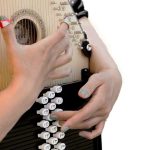 AutoharpApril 4, 2024Where Is the Best Place to Buy an Autoharp? Your Top Picks Reviewed
AutoharpApril 4, 2024Where Is the Best Place to Buy an Autoharp? Your Top Picks Reviewed AutoharpApril 4, 2024How Does the Autoharp Work? – Unveiling Its Melodic Secrets
AutoharpApril 4, 2024How Does the Autoharp Work? – Unveiling Its Melodic Secrets


